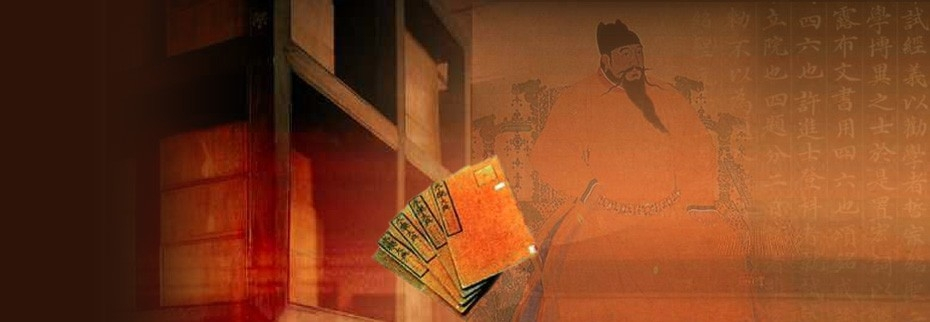
Great Compendium of the Yongle Era
Splendid
Chi Culture
Topic
Great Compendium of the Yongle Era
Compiled over the course of six years (1403–1408) under the auspices of Emperor Chengzu of the Ming during the Yongle reign (1403–1424), the Yongle dadian, or Great Compendium of the Yongle Era, is a treasure belonging to the world’s heritage. The Yongle dadian is a leishu, which is a type of anthology arranged by topic and often encyclopedic in scope. Important texts dating from before the fourteenth century are preserved in this work. These texts cover all manner of Chinese history, geography, literature, art, philosophy, and religion. The Western works with which it is most comparable were not published until more than three hundred years later: the French Encyclopédie (1751–1766) of Denis Diderot and the British Encyclopedia Britannica (1769–1771).
The scale of the Yongle dadian exceeds any book compiled in the preceding dynasties. It has 22,877 juan (fascicles), 10.095 ce (volumes), and 370 million characters. It even surpasses the largest leishu compiled during the Qing dynasty—Gujin tushu jicheng (Comprehensive collection of books past and present), which has only ten thousand juan and 160 million characters. The Yongle dadian was compiled under the supervision of Xie Jin (1369–1415) and Yao Guangxiao (1335–1418). Xie Jin was born in the second year of the Hongwu reign (1369). Zhu Di (1360–1424) who reigned as Emperor Chengzu (r. 1402–1424) appreciated his talents very much and assigned him to oversee the compilation of the Taizu shilu (Veritable records of Emperor Taizu) and Lienü zhuan (Biographies of illustrious women). However, it was his compilation of the Yongle dadian that secured his reputation for posterity. Yao Guangyuan was born during the Yuan dynasty (1271–1368) in the third year of the Yuantong era during the reign of Emperor Shun (r. 1333–1370). When Yao was fourteen, he became a Buddhist monk and took the name Daoxing.
Each complete volume of the Yongle dadian is 50.3 cm by 30 cm. The very size of the book demonstrates the grand vision of the emperor. A single volume of the work normally contains two juan, but this varies and there are some that are made up of only a single juan or, even three. The paper is snow-white and made solely from bark; a light fragrant scent wafts from the volume when the pages are turned. The Yongle dadian has a particularly beautiful binding. The book jacket is mounted on stiff, multi-layered Xuan paper and wrapped entirely with yellow silk. It is bound in the wrapped-back style, which is very much like modern books although it was a common style in the Yuan and early Ming dynasties. Books bound this way can stand vertically on book shelves unlike the traditional thread-bound books which lie horizontally. When the more than ten-thousand volumes are placed on book shelves, it resembles a small library.
The complete Yongle dadian was written by hand in the official palace-style regular script using red and black ink. The red ink was used mainly to sidebar names of authors and book titles. The black was used for the titles, juan number, the main text, the rhyme heading, and pictures. The punctuation was produced using a hollowed, round brush handle (made from reed, bamboo, bone or even jade) dipped in cinnabar paste. Overall, it looks dignified and the red ink is brilliant. The line drawings of the mountains, rivers, and diverse objects are precise and exquisite. More than two-thousand copyists were employed to copy and edit the book. The first pass draft took five years. After it was finished, it took less than two years to complete the work. On average, the copyists wrote 500,000 characters a day.
The job of the compilers was to determine the entries and select the texts that would be used. They did not write the entries from scratch; they created the entries by copying texts from various books and documents; sometimes they even copied the entire book. They included the source of the entries, the titles of the books and the authors. This has proved fortuitous to later scholars who have been able to reconstruct lost works from parts scattered throughout the Yongle dadian.
If you were to turn to the last page of the Yongle dadian, you would see several lines of small, fine characters on the page which consist of the official titles of the copyists, punctuators, and proofreaders. During the Yongle reign, the copyists worked under strict rules—they had to arrive early and leave late and were forbidden to hire others to do their work. If mistakes were made, another piece of paper would be supplied and the whole page had to be rewritten. Regardless of how many times he might have to do this, he was paid only for the one error-free page. Copyists who were slack would be punished. It was a strict system but it was necessary for the completion of the magnificent work.



